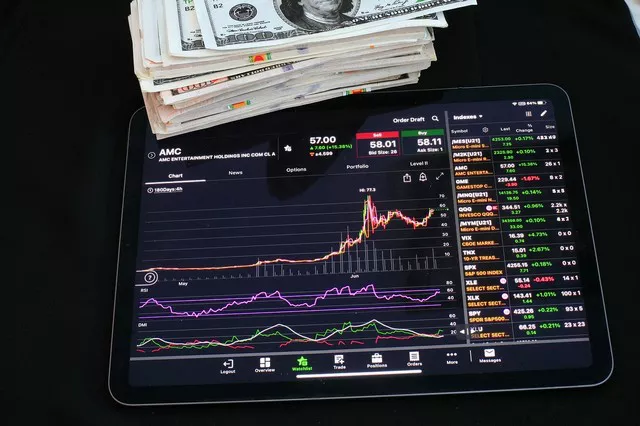NEW YORK, Feb 20 — U.S. stocks fell sharply on Thursday after weak guidance from Walmart raised concerns about consumer demand, affecting investor sentiment.
A broad selloff in the stock market pulled all three major U.S. indexes into negative territory. The Dow Jones Industrial Average saw the steepest drop, falling by 1.01%. The S&P 500 ended its two-day streak of record highs.
In response to rising uncertainties, gold prices surged to a record high, indicating a shift towards safer assets.
Walmart’s Forecast Adds to Market Worries
Walmart, the world’s largest retailer, provided disappointing sales and profit forecasts for the current fiscal year. The company’s outlook, which missed analysts’ expectations, fueled concerns about weaker consumer demand.
Robert Pavlik, senior portfolio manager at Dakota Wealth, noted that since consumer spending drives 70% of the U.S. economy, Walmart’s weak forecast raised doubts about consumer health and future spending.
As a result, Walmart’s shares dropped 6.5%, and other major retailers, including Target and Costco Wholesale, saw their stocks decline by 2.0% and 2.6%, respectively.
Tariffs Contribute to Market Uncertainty
Walmart’s results also highlighted the potential impact of U.S. tariffs. The Trump administration recently expanded its tariff list to include lumber, autos, semiconductors, and pharmaceuticals. Mike Dickson, head of research at Horizon Investments, stressed that the uncertainty surrounding tariffs continues to affect the market, with many questioning whether these measures are part of a broader negotiating strategy or a serious policy shift.
Economic Data Shows US Economy Remains Solid
Despite the stock market decline, recent economic data suggests that the U.S. economy is in solid shape. Jobless claims and factory activity reports from the Atlantic region indicate ongoing strength, aligning with recent comments from Federal Reserve policymakers.
However, there are concerns about potential labor market disruptions, particularly due to recent layoffs by Elon Musk’s Department of Government Efficiency (DOGE), which has resulted in the dismissal of thousands of federal employees.
Market Performance: Sector-wise Breakdown
The Dow Jones Industrial Average lost 450.94 points, or 1.01%, closing at 44,176.65. The S&P 500 fell by 26.63 points, or 0.43%, to 6,117.52, while the Nasdaq Composite lost 93.89 points, or 0.47%, ending at 19,962.36.
Among the 11 major sectors in the S&P 500, financials saw the largest decline, dropping 1.6%. Energy, on the other hand, posted the biggest gain, rising by 1.0%.
Notable Stocks: Winners and Losers
Several stocks saw notable movements:
Palantir Technologies fell 5.2% after the Pentagon indicated that it was considering potential budget cuts for fiscal year 2026.
Alibaba Group saw its U.S.-listed shares rise by 8.1% following a strong third-quarter revenue report that exceeded expectations.
Hasbro jumped 13.0% after the toymaker beat quarterly profit and revenue estimates.
Baxter International gained 8.5% after issuing a better-than-expected profit forecast for 2025.
Market Breadth and Trading Volume
Declining issues outnumbered advancers on both the New York Stock Exchange (NYSE) and Nasdaq. On the NYSE, there were 125 new highs and 72 new lows, while on the Nasdaq, 1,617 stocks rose and 2,734 fell.
The S&P 500 recorded 10 new 52-week highs and three new lows, while the Nasdaq Composite saw 54 new highs and 132 new lows.
U.S. exchange volume reached 16.36 billion shares, above the 15.57 billion average for the past 20 trading days.
Related topics:


